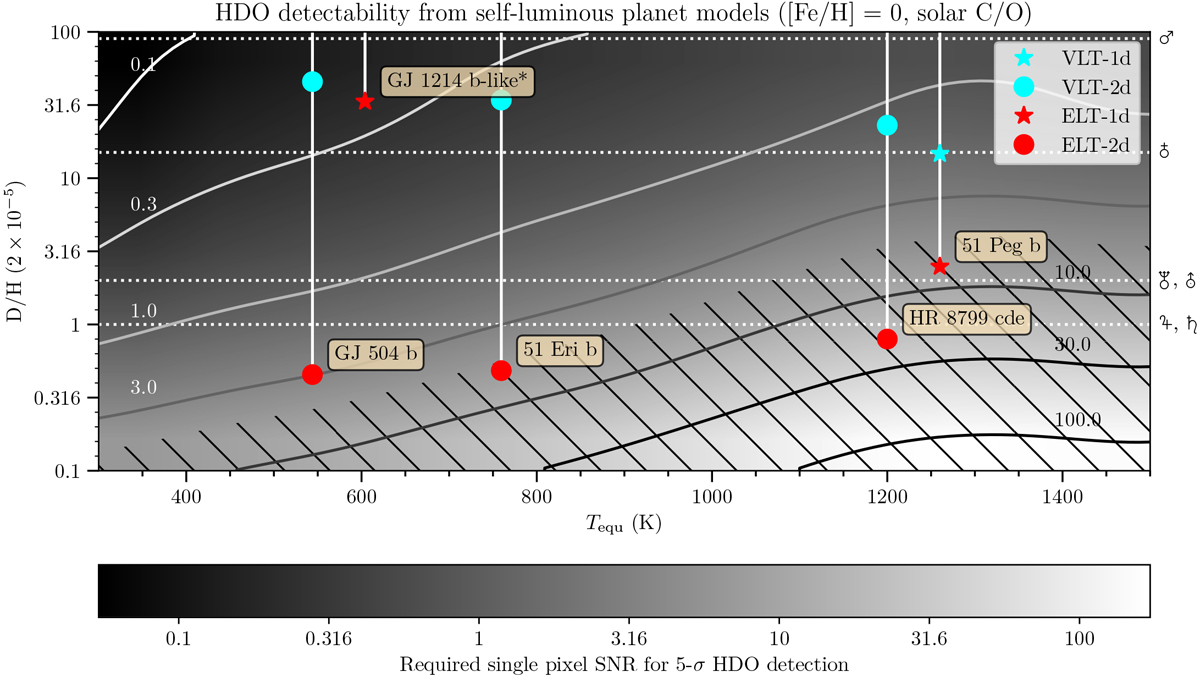Fig. 6.

Contour map showing the required S/N of the planetary spectrum per pixel, as function of planetary equilibrium temperature and D/H value, for an HDO detection at an S/N of five. The considered wavelength region is 3.6 to 3.8 μm. The D/H values of the Solar System planets are indicated by the horizontal white dotted lines. The colored symbols indicate the lowest detectable D/H values for various exoplanets. Cyan and red symbols indicate limits for CRIRES+ at VLT and METIS at ELT, respectively, assuming a single night of observation (10 h). Filled circles stand for those targets which can be angularly separated from their host star, assuming a stellar flux reduction at the planet position by a factor 100 and 1000 for the VLT and ELT, respectively. Star-symbols denote planets that cannot be spatially resolved, for example hot Jupiters, hence no flux suppression is possible. * GJ 1214 b-like planet is a hypothetical non-transiting twin of GJ 1214 b at half the distance from Earth. The hatched area indicates the region where the required S/N per pixel is larger than 5, implying very weak HDO lines, which may be difficult to recover accurately with planet atmospheric modeling.
Current usage metrics show cumulative count of Article Views (full-text article views including HTML views, PDF and ePub downloads, according to the available data) and Abstracts Views on Vision4Press platform.
Data correspond to usage on the plateform after 2015. The current usage metrics is available 48-96 hours after online publication and is updated daily on week days.
Initial download of the metrics may take a while.


